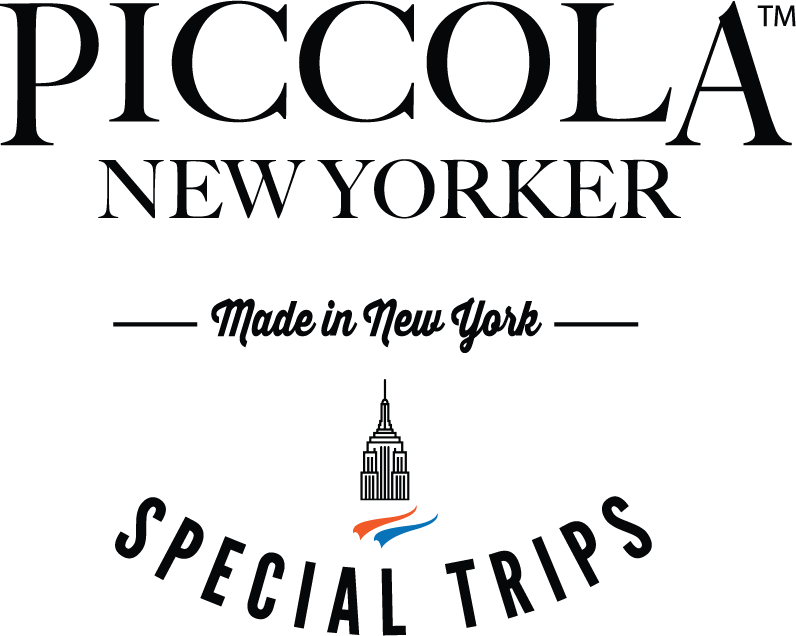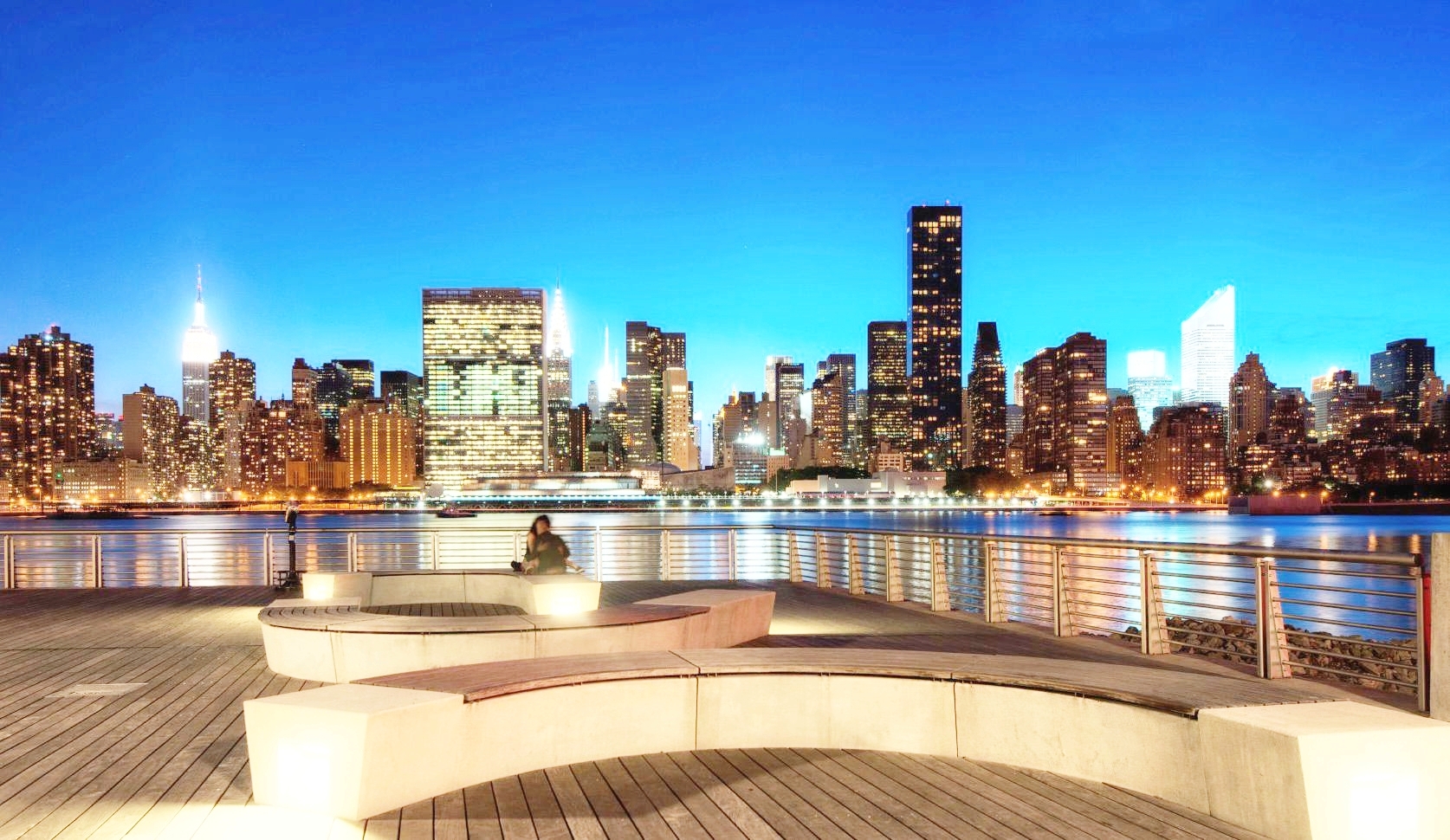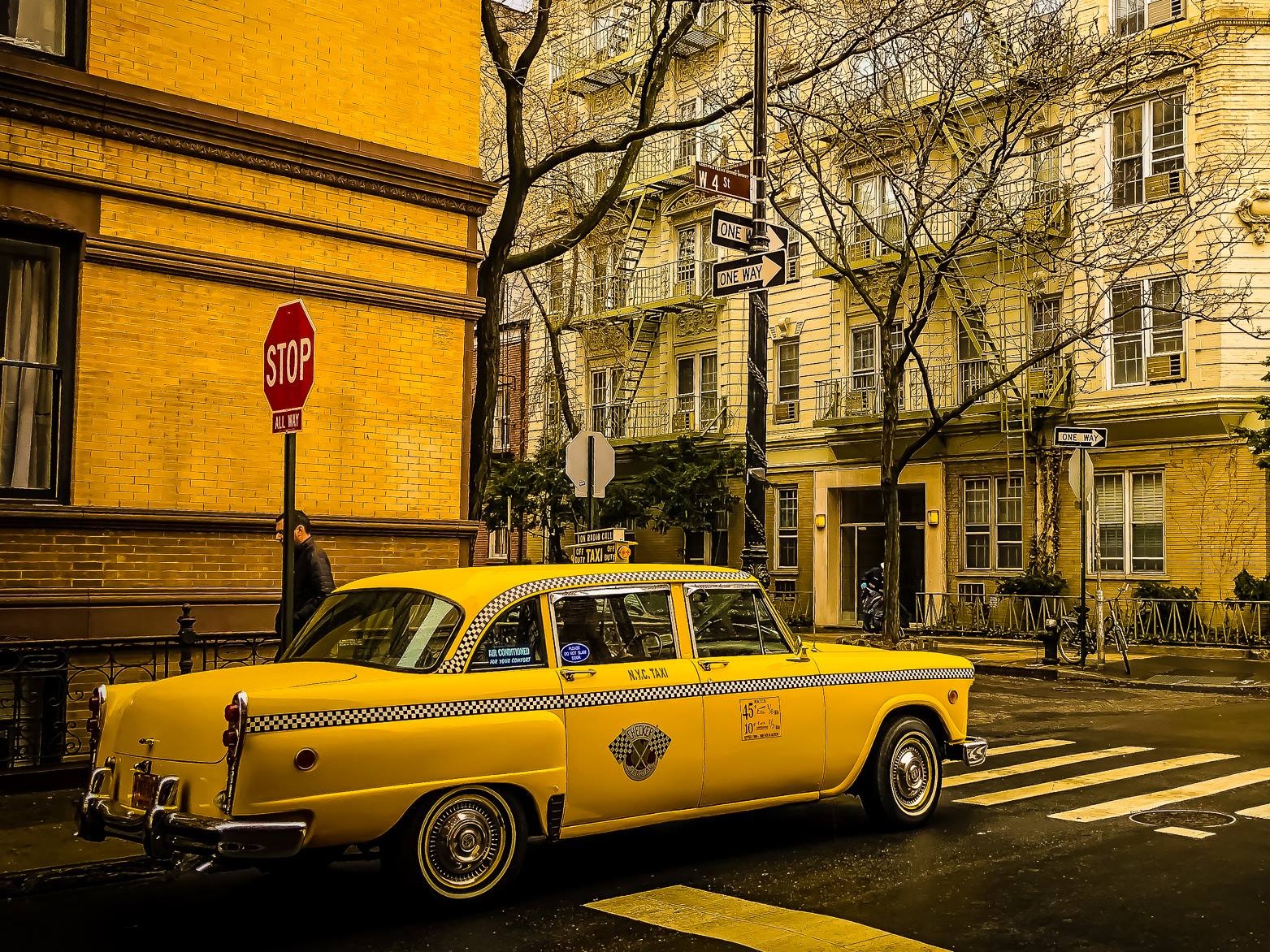The secrets of the heart of New York
By Lucas Compan
New York's Central Park is an oasis from the hustle and bustle of the big apple. The historic park was designed in the 19th century, and houses its fair share of secrets beneath its trees and along its winding paths.
Central Park: autumn, early in the morning, you feel like you are walking on a natural carpet of leaves. Photo: Lucas Compan
Frederick Law Olmsted and Calvert Vaux were the winners of the design competition to create a great public park in New York City. The year: 1858. They titled their plan "Greensward Plan." They also received the amount of two-thousand dollars as a prize. Also, they became national famed landscapers and architects.
On July 21, 1853, the New York State Legislature enacted into law the setting aside of more than 750 acres of land central to Manhattan Island to create America's first major landscaped public park.
They would soon refer to it as "Central Park." Frederick Law Olmsted and Calvert Vaux, the winners of the 1858 design competition for Central Park, along with other socially conscious reformers understood that the creation of a great public park would improve public health and contribute greatly to the formation of a civil society.
Immediately, the success of Central Park fostered the urban park movement, one of the great hallmarks of democracy of nineteenth century America. There are 843 acres of hiking trails, walking paths, lakes, gardens and even a zoo and the 19th century Belvedere Castle.
In this story, you will learn about a few secrets you didn't know about this park in the heart of New York City: Central Park.
Frederick Law Olmsted and Calvert Vaux, the winners of the 1858 design competition for Central Park
Frederick Law Olmsted
Calvert Vaux
10 – Built on the ruins of a 19th Century village
Think about this when you're relaxing in Central Park over the weekend: An entire community once lived there, with homes and several churches and at least one school, right in the park (before it was the park).
We're talking about Seneca Village, a community of some 260 people that existed from the 1820s until 1857, when they were evicted so that Central Park could be created. They lived in the area between 81st and 89th Streets and 7th and 8th Avenues, in what is now part of Central Park, east of Central Park West. Watch the video to learn more.
The Corner of a Seneca Village Church, across from Spector Playground at W85th St Entrance. image: courtesy central park conservancy
A map of Central Park from 1875 | Public domain. Click to zoom in
Seneca Village was a small but vibrant community founded in 1825 by free working class African-Americans in uptown Manhattan. In 1853, the city took the land over and paid the villagers to leave.
9 – It's grown by a few blocks
Central Park experienced a pretty dramatic growth spurt in 1863. Until then, the park had stopped at 106th street but its designers decided to extend it further north to 110th street. They had not included the additional north section of the park in their original design, because they did not think the large rock outcrop and the swamp behind it, which is now the Harlem Meer, could be made beautiful. But then they realized the land had no real estate value, so they included it in the park and now it's one of the most beautiful and beloved corners of Central Park.
Detailed map of central park. image: central park conservancy
8– New York drinking water flows in the waterfalls
There are at least five waterfalls in Central Park, all completely man-made, and most of which are located in the Ravine. The water that flows here is actually New York City drinking water that comes from a 48-inch pipe hidden by the rocks at the Pool Grotto on West 100th Street.
The water that flows here is actually New York City drinking water.
There are at least five waterfalls in Central Park, all completely man-made,
7 – You can find prehistoric rocks
Did you know? Everyday in Central Park, children and adults play, climb, and relax on ancient rocks which are approximately 450 million years old. Besides the trees, which are very young by comparison, the only natural feature in the Park that the designers incorporated into their design plan are these metamorphic rocks.
Everyday in Central Park, children and adults play, climb, and relax on ancient rocks which are approximately 450 million years old. image: central park conservancy
The rock outcrops in the park are Manhattan schist and Hartland schist. As we can find on Wikipedia: Manhattan schist and Hartland schist were formed in the Iapetus Ocean during the Taconic orogeny in the Paleozoic era, about 450 million years ago. During this period the tectonic plates began to move toward each other, which resulted in the creation of the supercontinent, Pangaea.
Some of Central Park’s rocks have what is called “Glacial Striations“, which are grooves in the rock that were formed when sediment embedded in the bottom of the moving glacier was dragged across the rock, leaving groove marks . Looking at these grooves, it is fun to imagine the big glacier moving through the park. You can find these rocks all over the park.
t is fun to imagine the big glacier moving through the park. You can find these rocks all over the park.
Walk in Central Park like you were there
6 – A gift from Japan in 1912
The Yoshino cherry is a naturally occurring hybrid in Japan. Central Park's Yoshino cherries, a gift of friendship from the government of Japan in 1912, can be found on Cherry Hill and are also concentrated on either side of the Reservoir. Japan also sent a number of these beautiful trees, known as sakura, to be planted around Washington, D.C.'s Tidal Basin. When in full bloom, the abundance of the Yoshino cherry's simple, white blossoms can be intensely beautiful.
Take this virtual tour in central park to be mesmerized by the beauty of these Yoshino Cherry trees.
The Yoshino cherry is a naturally occurring hybrid in Japan. Central Park's Yoshino cherries, a gift of friendship from the government of Japan in 1912. Photo: lucas Compan
can be found on Cherry Hill and are also concentrated on either side of the Reservoir. It can be intensely beautiful. Photo: lucas Compan
5 – The Sheep's Meadow
Today many visitors to Central Park flock to Sheep Meadow to relax on the lawn with a good book, but from 1864 to 1934 this space – as its name suggests – was home to an actual flock of sheep. The animals would roam here when not housed inside a nearby Victorian building that would later become the Tavern on the Green restaurant.
The Sheep's meadow in central park on a sunny day. Photo: Lucas Compan
Sheep's Meadow today, and from 1864 to 1934 (Image: Wikipedia)
The Sheepfold and Barn (Image: Wikipedia)
4 – Film Producers turn the Park upside down – and making it enchanted
There are a dozen movies filmed in Central Park. Central Park Conservancy has fielded its fair share of outlandish requests from film producers. According to the former Conservancy's Elizabeth Kaledin, the craziest one came from producers of a Vietnam war movie. They asked "if they could "blow up" the Ramble – the 38-acre woodland in the middle of the park where over 270 species of birds have been sighted with real explosives," she said. They allegedly tried to convince the conservancy's leadership to approve the request by telling them the explosions would help turn the soil, but they were turned down.
"Die Hard with a Vengeance": Bruce Willis and Samuel L. Jackson's production team turning Central Park upside down
In the third "Die Hard" movie -- “Die Hard with a Vengeance” -- Bruce Willis is seen driving a yellow cab through Central Park with a screaming Samuel L. Jackson in the passenger seat.
"They actually drove a taxi through Central Park," Kaledin said of the 1995 film. They drove down the Bridle Path around 72nd Street and jumped the wall onto 59th Street, she said, adding, "This wouldn't happen today."
More than 231 movies shot in Central park as of 2017
Did you know? The most sought after film star? It is Central Park. Yes! The top 5 most filmed locations in the United States of America are: #1 Central Park; #2 Venice Beach (California); #3 Greenwich Village (Manhattan); #4 Astoria (Queens, New York); #5 Williamsburg (Brooklyn, New York). Click here to know about the top 20. In this report, released by Go Compare Travel, you will find that the Manhattan green space is the most filmed location on earth. More than 231 movies have shot there, according to the report, 70 more than the second most-filmed location — Venice Beach, California.
The first movie filmed in Central Park was made by Vitagraph Studios in 1908. They produced the first film version of Romeo and Juliet made in the USA. It was also the very first film to be shot in Central Park.
Enchanted is a 2007 American musical fantasy romantic comedy film, produced by Walt Disney Pictures and Sonnenfeld and Josephson Entertainment. image: courtesy walt disney studios
3 – John Lennon's Legacy
Strawberry Fields is a garden of peace in Central Park. This living memorial is dedicated to John Lennon. The song "Strawberry Fields Forever" was recorded in 1966 and the title was derived from an orphanage in Liverpool, England, where Lennon would frequently play with the children as a child himself. The memorial is located at the West Side between 71st and 74th Streets.
The city of Naples donated the black-and-white mosaic, which was created by Italian artisans.
The memorial is located at the West Side between 71st and 74th Streets. image; wikipedia
On October 9, 1985, Strawberry Fields in Central Park was officially dedicated to Lennon, on his birthday anniversary. His widow, Yoko Ono worked with Bruce Kelly, a prolific landscape architect, and the Central Park Conservancy, in designing the memorial. It's intended to be a place of peace, contemplation and meditation, and as such it's a designated "Quiet Zone." The city of Naples donated the black-and-white mosaic, which was created by Italian artisans.
2 – The super secret original survey bolt
Drafted between 1818 and 1820 by surveyor John Randel, Jr., this set of one-of-a-kind documents has long been in the care of the Office of the Manhattan Borough President. The hand-drawn, hand-colored maps document the island of Manhattan in meticulous detail, revealing Manhattan block by block as it was in the 1810s.
An original copy of John Randel, Jr.’s Manhattan grid map at the County Clerk's Office, in New York. The intersection in focus, Sixth Avenue at West Eighty-sixth Street, is now a part of Central Park. (Image credit: Michael Appleton / The New York Times / Redux)
One of many memorable images from Marguerite Holloway's recommended new book "The Measure of Manhattan" is Central Park bolt, a 19th-century survey marker affixed in place by John Randel Jr., original surveyor of Manhattan's street grid.
The bolt is, in Holloway's words, "the relic of an invisible intersection, one city leaders had planned to build in 1811 but that had never been constructed." In fact, she adds, these "planned but never realized intersections" are rare but not, in fact, unique, low in number but peppered around the island like acupuncture points that somehow materialized before the body they were meant to intensify. The city lives alongside and strangely amidst other, historically unrealized versions of itself.
"This particular grid bolt," as Holloway goes on to describes it, "is now long-forgotten, but has recently become part of the National Spatial Reference System database.""It means, as she phrases it, "that a bolt on a rock in a park on an island is connected to the satellites that travel above us in great arcs," incorporated into the great digital systems of earth-measurement—or geodesy—used today.
1 – Great park, big numbers
Central Park has:
– 843 acres ( 3,412 m2 )
– 6 miles around ( 9.65km )
– 7 water bodies
– 36 bridges
More than 9,000 benches in Central Park. Photo: Filmvacation
– 48 fountains, monuments, and sculptures
– 21 playgrounds
– More than 9,000 benches
– 24,000 trees
– 42 million visitors annually (2013)
The Creators
The team that created Central Park from Right: Frederick Law Olmsted, Jacob Wrey Mould, Ignaz Anton Pilat, Calvert Vaux, George E. Waring Jr., and Andrew Haswell Green. Photographed in 1862, on the Willowdell Arch
View of Willowdell Arch with the team that created Central Park. Standing on the pathway over the span, from Right: Frederick Law Olmsted, Jacob Wrey Mould, Ignaz Anton Pilat, Calvert Vaux, George E. Waring Jr., and Andrew Haswell Green. Photographed in 1862.
Central Park creators "standing" at the same spot they were pictured in 1862, and one-hundred and fifty years later on this juxtaposed image by Google Street View in 2012.
Central Park Zoo
The Central Park Zoo is a small 6.5-acre (2.6 ha) zoo located in Central Park in New York City. It is part of an integrated system of four zoos and theNew York Aquarium managed by the Wildlife Conservation Society (WCS), and is accredited by the Association of Zoos and Aquariums (AZA).
Allison Maher Stern, snow leopard




















